A Year Later, There's Still No Evidence Showing Governments Can Control The Spread Of COVID-19
Authored by Anthony Rozmajzl via The Mises Institute,
As we approach the one-year anniversary of fifteen days to flatten the curve, we have yet to acquire any data suggesting that the past year of life-destroying lockdowns and politicized behavioral mandates has done anything to keep us safe from covid-19. While discussions surrounding the reintroduction of nationwide lockdowns seem to have ceased—it's impossible to ignore the lockdowns' disproportionately deadly effects and the numerous studies demonstrating their futility—the media still retain their grip on the narrative that nonpharmaceutical interventions (NPIs) such as mask mandates, curfews, capacity restrictions, gathering restrictions, and others remain necessary to prevail in our fight against covid-19.
Government officials, in lockstep with big tech and nearly all major news outlets, have controlled the NPI narrative to such an extent that its proponents have simply sidestepped the burden of proof naturally arising from the introduction and continued support of novel virus mitigation strategies, happily pointing to the fact that their ideas enjoy unanimous support from the corporate media and government officials all over the world. This seemingly impenetrable narrative rests, of course, on the critical assumption that NPIs, or behavioral mandates, have protected us from covid-19.
The One Chart That Covid Doomsdayers Can’t Explain
If there is one visualization the reader should become familiar with to highlight the ineffectiveness of a nearly a year’s worth of NPIs, it would be the following chart comparing hospitalizations and deaths per million in Florida with those in New York and California, however we will be focusing solely on the comparison between Florida and California.
In light of everything our officials have taught us about how this virus spreads, it defies reality that Florida, a fully open and popular travel destination with one of the oldest populations in the country, currently has lower hospitalizations and deaths per million than California, a state with much heavier restrictions and one of the youngest populations in the country. While it is true that, overall, California does slightly better than Florida in deaths per million, simply accounting for California's much younger population tips the scales in Florida’s favor.
Florida has zero restrictions on bars, breweries, indoor dining, gyms, places of worship, gathering sizes, and almost all schools are offering in-person instruction. California, on the other hand, retains heavy restrictions in each of these areas. At the very least, Florida's hospitalizations and deaths per million should be substantially worse than California's. Those who predicted death and destruction as a consequence of Florida's September reopening simply cannot see these results as anything other than utterly remarkable. Even White House covid advisor Andy Slavitt, much to the establishment’s embarrassment, had no explanation for Florida’s success relative to California. Slavitt was reduced to parroting establishment talking points after admitting that Florida’s surprisingly great numbers were “just a little beyond our explanation.”
Does Compliance Explain the Discrepancy?
Invariably, the above graph will invoke responses pointing to Californians’ supposed lack of compliance relative to Floridians as justification for their poor numbers. On its face, this claim is patently absurd given that Florida has been fully open since September. But if we dig into the data a bit more, we find some relevant metrics that shed light on how frequently Floridians and Californians are engaging in behaviors that allegedly fuel covid-19 transmission. The following survey data—California is shown in blue, Florida in gray—is taken from Carnegie Mellon University's Delphi Research Group. Beyond the red vertical line, Florida has had consistently lower hospitalizations and deaths per million than California.
Mask Compliance
Bar Visits
Traveling
Restaurant Visits
We can see that, relative to Floridians, Californians have consistently been doing a better job of avoiding social behaviors that allegedly fuel the spread of covid-19. Moreover, at no point was there a drastic change in behavioral patterns after December 17 indicating that Floridians had suddenly begun avoiding activities purportedly linked to covid transmission.
A quick glance at each state's "social distancing score" also indicates, yet again, that Californians have been doing a better job avoiding activities meant to facilitate the spread of covid-19. Additionally, Google's covid mobility reports, as of February 16, 2021, show that Californians partake in fewer retail and recreational visits—restaurants, cafes, shopping centers, theme parks, museums, libraries, and movie theaters—as well as fewer grocery store and pharmacy visits, which include farmers markets, food warehouses, and speciality food shops. Evidently, the whole “noncompliance” schtick is nothing more than a fraudulent excuse for explaining away undesirable trends.
More Metrics Rebutting the Mainstream Covid-19 Narrative
Moving on from the Florida-California comparison, national metrics also highlight the lack of correlation between the intensity of states' NPIs—methodology for determining this can be found here—and deaths per million.
In fact, if we visualize case trends across all fifty diverse states, each state having varying levels of restrictions, you'll quickly notice a pattern that presents itself quite similarly across all fifty states: a bump in cases early to midway through the year followed by a much bigger surge in cases during winter months. The following data was retrieved from Johns Hopkins Coronavirus Resource Center.
Similar case patterns across fifty states is hardly an indicator of a government capable of influencing the course of the virus. Instead, research published in Evolutionary Bioinformatics shows that case counts and mortality rates are strongly correlated with temperature and latitude, a concept known as “seasonality,” which, once recognized, largely explains the failure of the past year’s NPIs.
Meanwhile, we can look at seasonally congruent regions to see whether or not varying degrees of behavioral mandates have had any noticeable impact on cases. What we find, thanks to seasonality, is that regardless of the timing or existence of mask mandates and other behavioral mandates, similar regions follow similar case growth patterns.
For the firm believer in NPIs, these simultaneous and nearly identical fluctuations between cities within the same state and states having similar climates are inexplicable. After accepting seasonality as one of the driving factors behind case fluctuations, we can start speaking of "covid season" as pragmatically as we speak of "flu season." A helpful visual of what covid season might look like, based on the Hope-Simpson seasonality model for influenza, can be found here.
Update on the Holiday Surge and Recent “Superspreaders”
Some of you may be wondering about the "holiday surges" that were supposed to have ravaged our hospitals following Thanksgiving and Christmas. Well, they never happened. Not only did the rate of covid-19 hospitalization growth decline after Thanksgiving, hospitalizations peaked less than two weeks after Christmas and have been sharply plummeting since! At the very least we should have seen a rapid increase in the hospitalization growth rate in the few weeks following Christmas.
As a bonus for those who like to keep up to date with the latest installments of The Media Who Cried Superspreader, Alabama recently came under heavy fire after thousands of maskless football fans took to the streets to celebrate their team winning the national college football title. FanSided, among others, was quick to label the large celebration as a superspreader event, and health officials were worried that the Alabama superspreader was going to result in a huge case spike. Here's what really happened.
Miraculously, cases immediately plummeted after Alabama’s "superspreader" event and continue to plummet to this day. If that wasn't enough, Mississippi, Alabama's next-door neighbor, followed a nearly identical case pattern despite hosting no superspreader events.
Finally, in our most recent installment of The Media Who Cried Superspreader, we see that two weeks—two weeks being the establishment’s baseline lag time between superspreaders and their consequences—after millions of people gathered with friends and family to watch Superbowl LV, cases, hospitalizations, and deaths continue to plummet.
Despite the scary warnings and grim predictions of Superbowl gatherings, we find, yet again, a gaping hole in the mainstream covid-19 narrative. It would appear safe to conclude that the worst of covid season is behind us.
Data show that from the few weeks prior to February 4, cases have fallen 45 percent in the United States—cases are still declining at a rapid pace despite mid-January warnings that the new variant would create a surge in cases—30 percent globally, and hospitalizations have dropped 26 percent since their mid-January peak. Yet there appears to be a general confusion as to how we've achieved these numbers. Did populations around the world unanimously begin complying with covid regulations? Did governments finally get serious about enforcing their mandates? These are some explanations we might hear, but only so long as cases and hospitalizations continue to trend downward.
It is very unlikely, however, that health officials will start pointing to seasonality as an alternative explanation for our continually improving numbers. To do so would be a tacit admission that nearly a year's worth of heavily politicized behavioral mandates, life-destroying lockdowns, and devastating business closures were all for naught. But the data have spoken, and it is abundantly clear that attempting to socially engineer a respiratory virus out of existence is nothing short of a fool's errand.
https://ift.tt/2NFFjw5
from ZeroHedge News https://ift.tt/2NFFjw5
via IFTTT


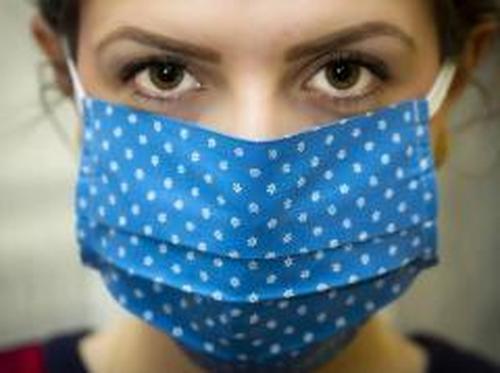
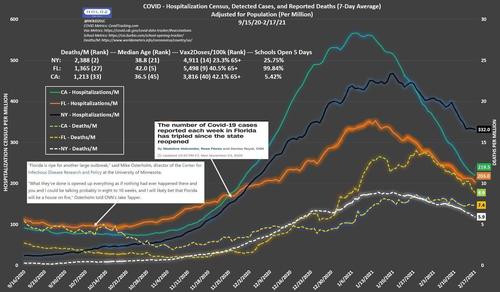
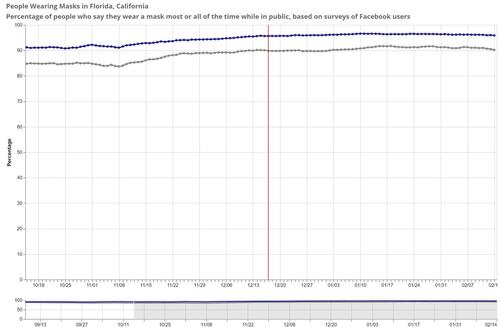
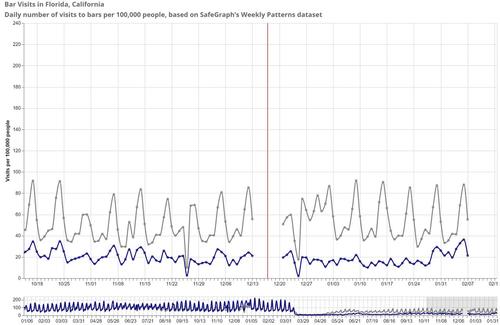
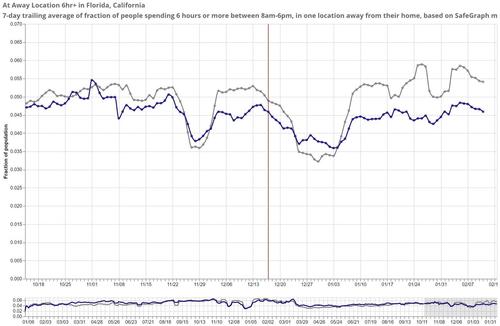
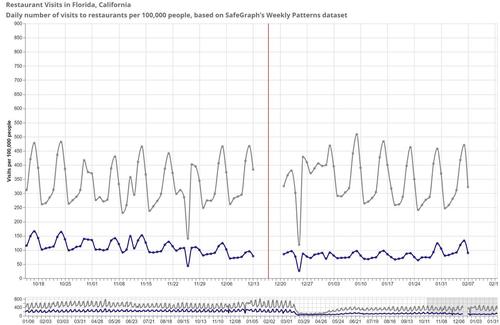
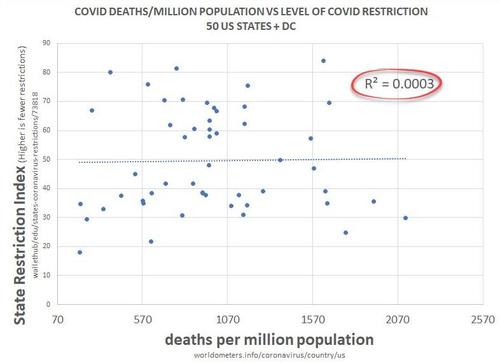
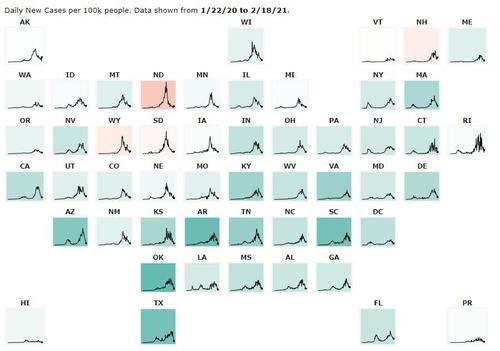
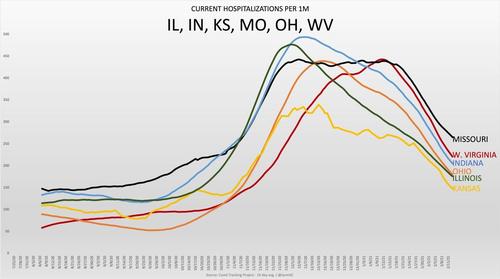
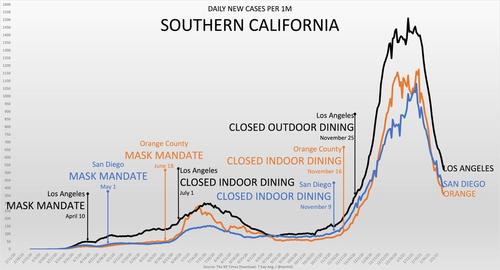
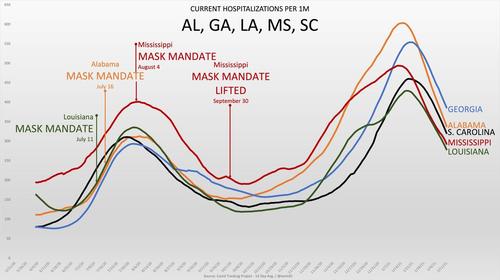
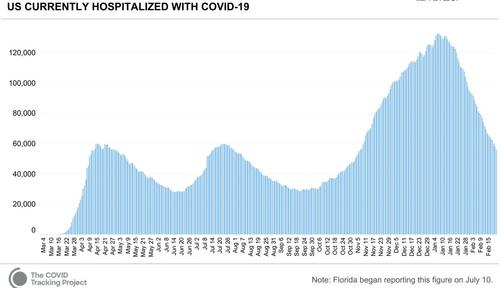
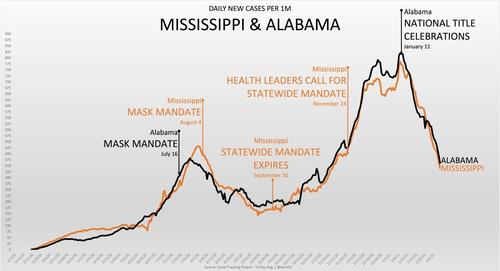
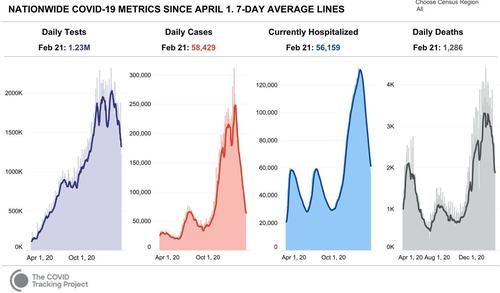


0 comments
Post a Comment